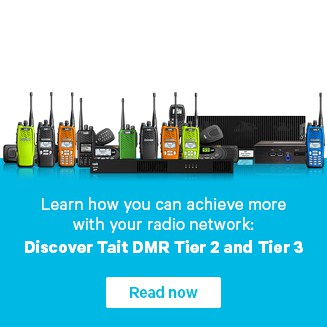Introduction to DMR
DMR Network Architecture
DMR Site Equipment
A DMR trunking site contains various architecture, such as base stations, Ethernet switches and transmitting or receiving antennas, and depending on the site, you may also find routers, power supply and power distribution equipment.
The base stations at a site provide the RF interface to the radios using the network. At each site, there is one control channels and a number of traffic channels. Each base station provides two “logical” channels each time sharing the full 12.5 kHz bandwidth.
In DMR Tier 3, there are two main architectural types. The first uses central control, the second uses distributed management of resources.
In centralised control systems, powerful computers are employed to control and switch voice and data packets between sites. These computers are called nodes. In a centralized control model, we have a number of nodes connecting sites together to form Wide Area Networks. A DMR Network can consist of just a single site or a single channel which can carry out all of the trunking requirement of DMR Tier 3.
In a DMR network, every site has the ability to operate independently. If the link from a central controller fails, the site can carry on and switch voice traffic and data only for radios registered at that site. In a distributed model, each site in the network has the capability of switching and controlling voice traffic between the sites. If we have multiple sites, we may employ multiple nodes. This allows for redundancy and a sharing of switching between the two nodes. In extremely large networks, it is possible to have up to 10, 15, 20 node controllers sharing the workload.
 Radio Academy
Radio Academy





